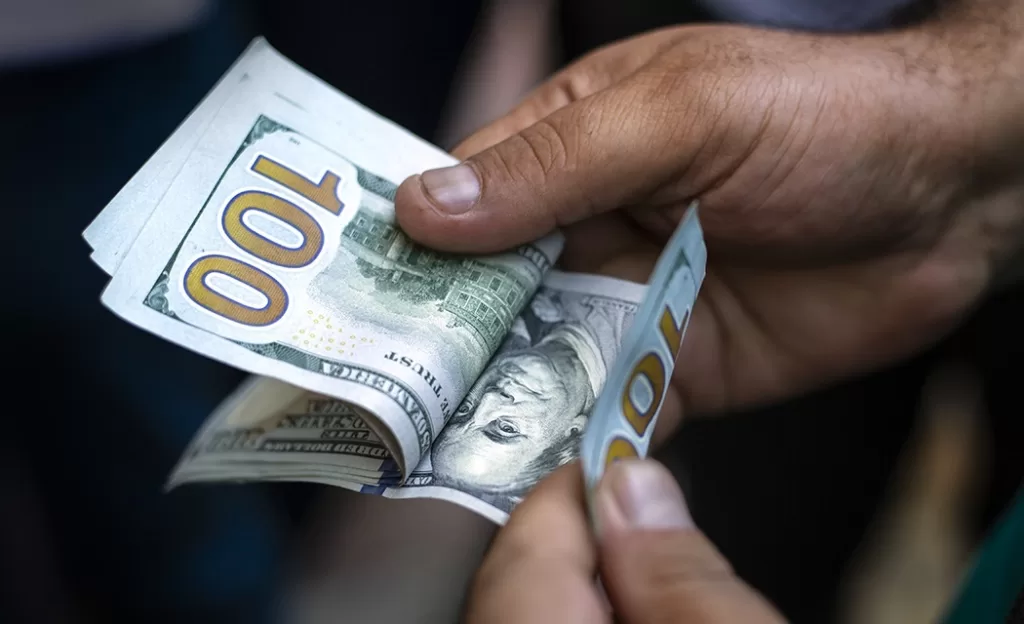As the US hits its $31 trillion debt ceiling, there's a danger it could default. Yet the solution to avoiding the debt ceiling is surprisingly simple.
 If and when it does run out of cash, the US will default on its obligations to repay borrowers and make payments to individuals and businesses. : Farsnews.ir CCBY4.0
If and when it does run out of cash, the US will default on its obligations to repay borrowers and make payments to individuals and businesses. : Farsnews.ir CCBY4.0
As the US hits its $31 trillion debt ceiling, there’s a danger it could default. Yet the solution to avoiding the debt ceiling is surprisingly simple.
The US government is close to running out of cash.
It hasn’t been able to borrow any new money since January, when it reached its debt ceiling of $31 trillion.
If the government defaults on its debts, there are fears it could crash the global economy. Intense negotiations between Democrat President Joe Biden and the Republican-controlled House of Representatives to avoid this scenario are ongoing.
A positive result is not guaranteed. And the window to reaching an agreement is closing. Fast.
If and when it does run out of cash, the US will default on its obligations to repay borrowers and make payments to individuals and businesses.
Current estimates put D-day or default day sometime during the US summer, although US Treasury Secretary Janet Yellen has warned that D-day could be as early as June 1.
It could also be a month or two after summer. This will depend largely on how the US economy performs. Slow growth and high unemployment will bring in less tax revenue and make D-day come sooner. Rapid growth will generate more tax revenue and push it back.
When the US reaches its borrowing limit, the US Treasury can engage in ’emergency measures’ to conserve cash. Typically it stops paying into the retirement accounts of government employees, with the understanding that once the debt ceiling issue has been resolved the government will make good on this money.
It also defunds special government accounts until the debt ceiling is raised. For example, the government allocates $23 billion to the Treasury to stabilise the value of the dollar. Defunding gives the government more money to pay its bills.
But make no mistake: the issue has to be confronted at some stage.
The one thing Congress could do
There is, however, something else that can be done to prevent a government default: Congress could increase the debt ceiling.
The problem is Republicans, who control the US House of Representatives, have refused to do this unless Democrats (who control both the Senate and the White House) agree to large cuts in government spending. This won’t happen, leading to the distinct possibility of a default.
Worse yet, the Republican Party has become extremely dysfunctional. During the first week of January the House went through 15 ballots before electing Republican Kevin McCarthy to be Speaker — even though no other Republican wanted the job.
To get votes from Donald Trump-supporting MAGA Republicans and become House Speaker, McCarthy promised that any Republican could put in motion a vote to recall him as Speaker.
If McCarthy were recalled, the result would be continual votes for a House speaker, as occurred in January. Even with votes from Democrats supporting McCarthy, there could be dozens of recall votes, keeping the House from doing any business for weeks.
While all these votes take place, the US government could go into default, which would have catastrophic consequences.
People, businesses, and non-profit organisations that loaned money to the US government would not get repaid.
Questions would arise about whether the US government would repay the money it borrows and make good on its financial obligations, such as paying its employees (including the military) and merchants who sold goods to the government. In addition, recipients of Social Security may not get paid the benefits they have come to expect and have always received.
More seriously, the credit rating of the US government would be downgraded, as occurs when people don’t pay their bills on time. US government debt currently exceeds $31 trillion, so a one percentage point increase in its borrowing costs would raise government debt by more than $310 billion when all existing government debt has rolled over.
In the short term, the annual cost would likely be half this amount or less, but still a hefty sum.
A bigger problem is that US government bonds are used as collateral on many loans — not just in the US but worldwide. They back loans between financial institutions, they back loans from banks to companies and they back loans from central banks to banks. Concerns about the value of these bonds will reduce lending and threaten to throw the entire world economy into a severe recession.
Fortunately, the Biden administration can do a few things if the US government comes close to defaulting.
$1 trillion coin and other solutions
Although it can’t print money, the US Treasury can mint platinum coins of any denomination. Minting a $1 trillion coin, and depositing it into its account at the Federal Reserve (the US central bank), would enable the government to pay its bills and repay bondholders.
Such action can be justified by appealing to the 14th Amendment to the US Constitution, which states: “The validity of the public debt of the United States … shall not be questioned.”
Another possibility is that when existing bondholders are repaid, the US sells bonds paying an interest rate premium at maturity. With this bonus, the new bonds will bring in more money when auctioned off. Yet, the government won’t borrow any more money; they would only promise to pay more interest in the future.
However, the best solution would be to just abolish the debt ceiling. The US is one of only two industrial economies with a debt limit that is a specific amount. The other is Denmark and its debt ceiling is set so high that it is unlikely to become a problem for a long time.
The US Congress enacted the debt ceiling in 1917 to let President Woodrow Wilson spend the money he deemed necessary to fight World War I without waiting for often-absent lawmakers to act. Congress, however, didn’t want to write the president a blank cheque; so it limited borrowing to $11.5 billion and required Congressional legislation to increase this figure.
But times have changed. In 1917 it took days for many elected representatives to reach Washington by rail. Today, with air travel and the possibility of voting online from home, quick votes are possible.
Congress approved all the spending and tax bills that created the government debt, implicitly approving a higher debt ceiling.
Congress now needs to step up and either raise the debt ceiling or eliminate it.
Steven Pressman is Professor of Economics at The New School for Social Research, Emeritus Professor of Economics and Finance at Monmouth University, and Associate Editor of the Review of Political Economy. He has published more than 190 articles in refereed journals and as book chapters, and has authored or edited 18 books. He is also a frequent contributor to newspapers and popular periodicals such as Challenge Magazine, The Washington Spectator and Dollars and Sense.
Originally published under Creative Commons by 360info™.
Editors Note: In the story “Governments in the red” sent at: 17/05/2023 09:45.
This is a corrected repeat.













